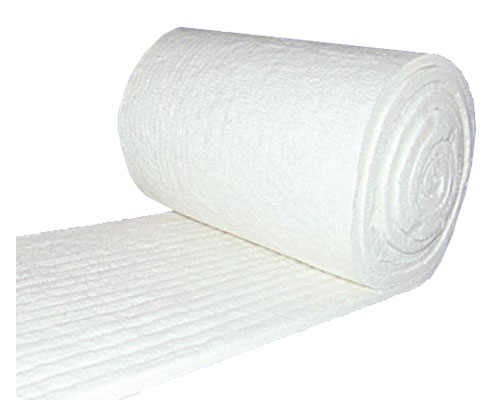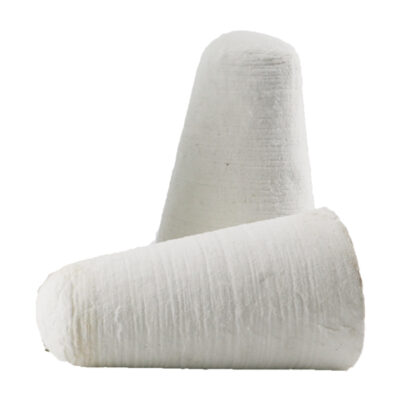Refractory fiber material refers to the general term for crystalline and amorphous fibrous materials with a refractoriness greater than 1580°C. Therefore, it includes aluminum silicate fibers with Al2O3 and SiO2 as the main components, alumina crystalline fibers with alumina as the main component, and other zirconia crystalline fibers with a refractoriness greater than 1500°C, forsterite fibers and other special components Oxide fiber. Refractoriness refers to the temperature at which the material reaches a certain degree of softening at high temperatures. It characterizes the performance of refractory materials against high temperature effects. The melting point and temperature of refractory materials are very different. For example, the refractoriness of aluminum silicate refractory fiber is about 1750~1770℃, its melting point should be 2000~2200℃, but its use temperature is only between 1000~1350℃.
Ceramic Fiber
Ceramic fiber is a common name for fibrous materials with an Al2O3 content of 45-60% in aluminum silicate refractory fibers. All ceramic fibers are amorphous fibers, which can also be called glass fibers. It is an amorphous solid fiber formed by the melting of liquid material in cooling. AdTech some products adopts ceramic fiber, such as Refractory Fiber Cones, Ceramic Fiber Rope, Ceramic Fiber Paper, Ceramic Insulation Board, Ceramic Wool Insulation.
Through the research and experiment on a series of problems that occur during the heating of refractory fibers, especially in use. During the use of refractory materials, the fibers shrink due to recrystallization, sintering and new phase generation, and the reaction between the inorganic binder and the fibers. When a certain temperature is reached, the fiber material is damaged under the action of heat due to accelerated grain growth and accelerated sintering process.

Refractory Fiber Material
When applying refractory fiber material, it must be clear that the fibrous material will accelerate its deterioration due to corrosion during use, thereby reducing its use temperature. Some components in the furnace atmosphere such as H2, CO, CH4 and NH3, as well as alkali metals, fluorine, chlorine and SO32- can affect the recrystallization process, including nucleation and crystal development rate. They react with fibrous materials, thereby reducing their use temperature and product performance.
The fiber material has good wind erosion resistance, and its wind erosion resistance varies according to the specific shape of the product. Moreover, the anti-scouring ability of the fiber wall lining against high-speed airflow decreases as the use temperature increases.
The heat and corrosion of the anchoring system is also an important factor affecting the service life of the fiber material. In summary, the design parameters of refractory fiber mainly include classified temperature and long-term safe use temperature, bulk density, thermal conductivity, thermal stability, chemical stability, heat-resistant linear shrinkage, wind erosion resistance, elasticity and breathability, heat capacity, Blackness, tensile strength, etc.

